Jürgen Freund
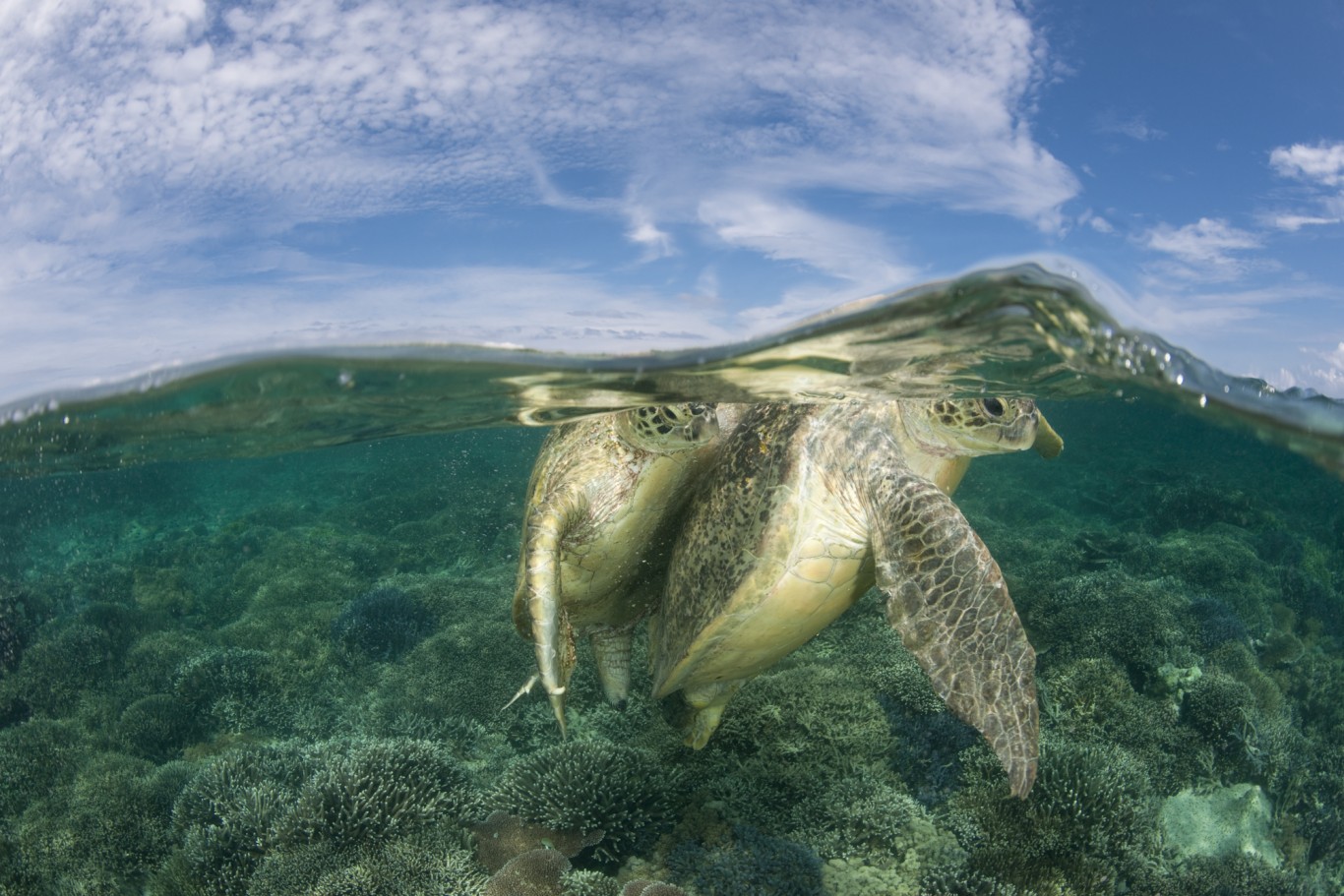
Green turtles mating above a shallow reef off the coast of Sipadan Island in Malaysian Borneo, one of the biodiversity hotspots of the Coral Triangle. Turtles are true romantics - the courting process can go on for several weeks before they get down to business. Turtles will also travel hundreds of miles to find the right mate. Males outnumber females, giving the latter the luxury of choice. There is speculation that if turtles mate in cold water, offspring are more likely to be male, whereas warm water shenanigans result in more female babies.
Jürgen Freund
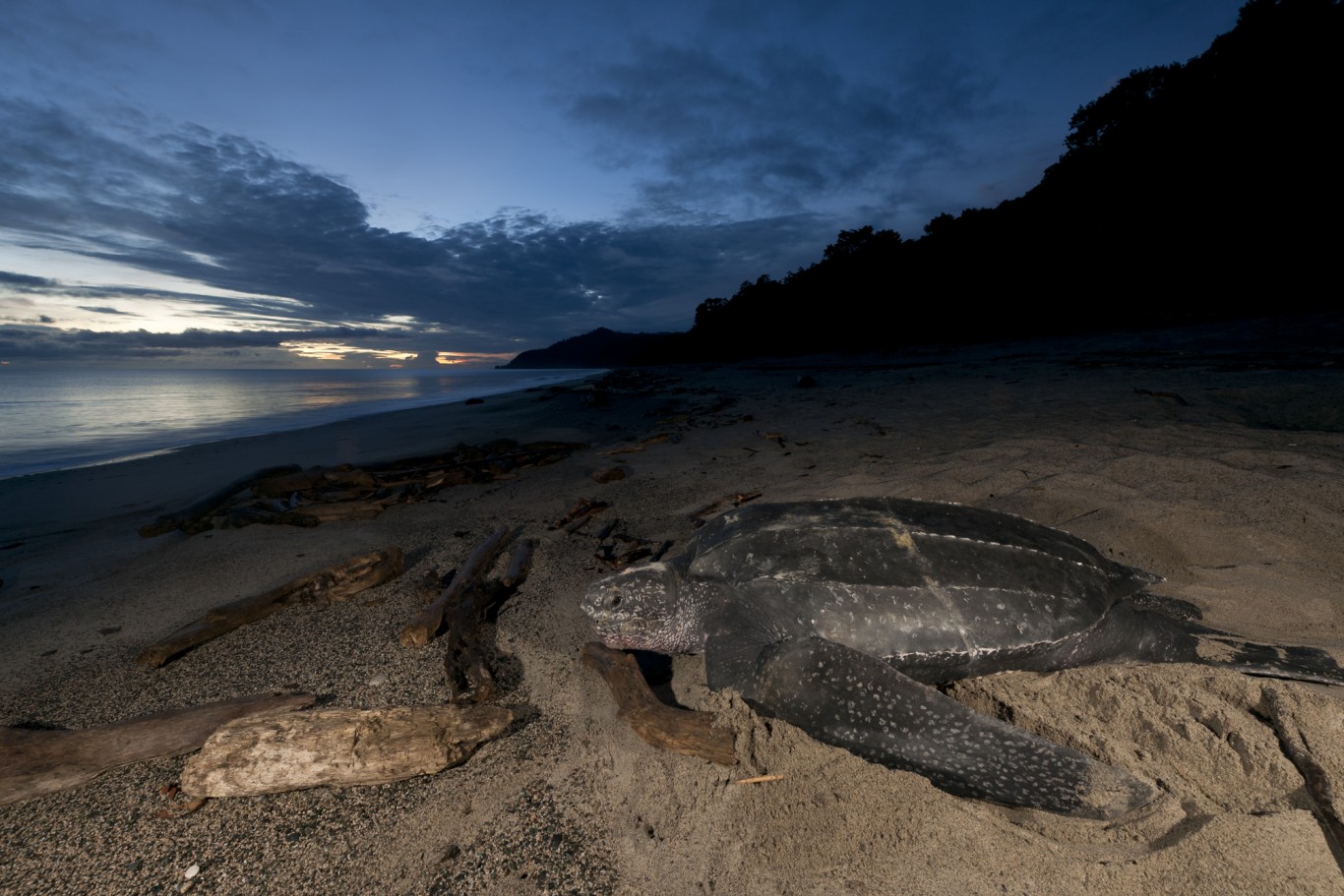
Female sea turtles may mate two or three times in a season, each time going ashore to lay her eggs a few weeks after each coupling, usually at night. Sometimes females work together to dig one big hole for their eggs. Males on the other hand never leave the water.
Jürgen Freund

Turtles lay between 50 and 200 eggs. Once the eggs are buried in the sand they're on their own. The temperature at which the eggs are incubated effects what gender they turn out to be, which is why climate change could have serious impacts on populations. Turtles don't account for changes in climate, burying their eggs at what ought to be the right depth for optimal temperature. Turtles need to lay many eggs as survival rates are so low. Many turtles fail to even make it out of their shells.
Jürgen Freund
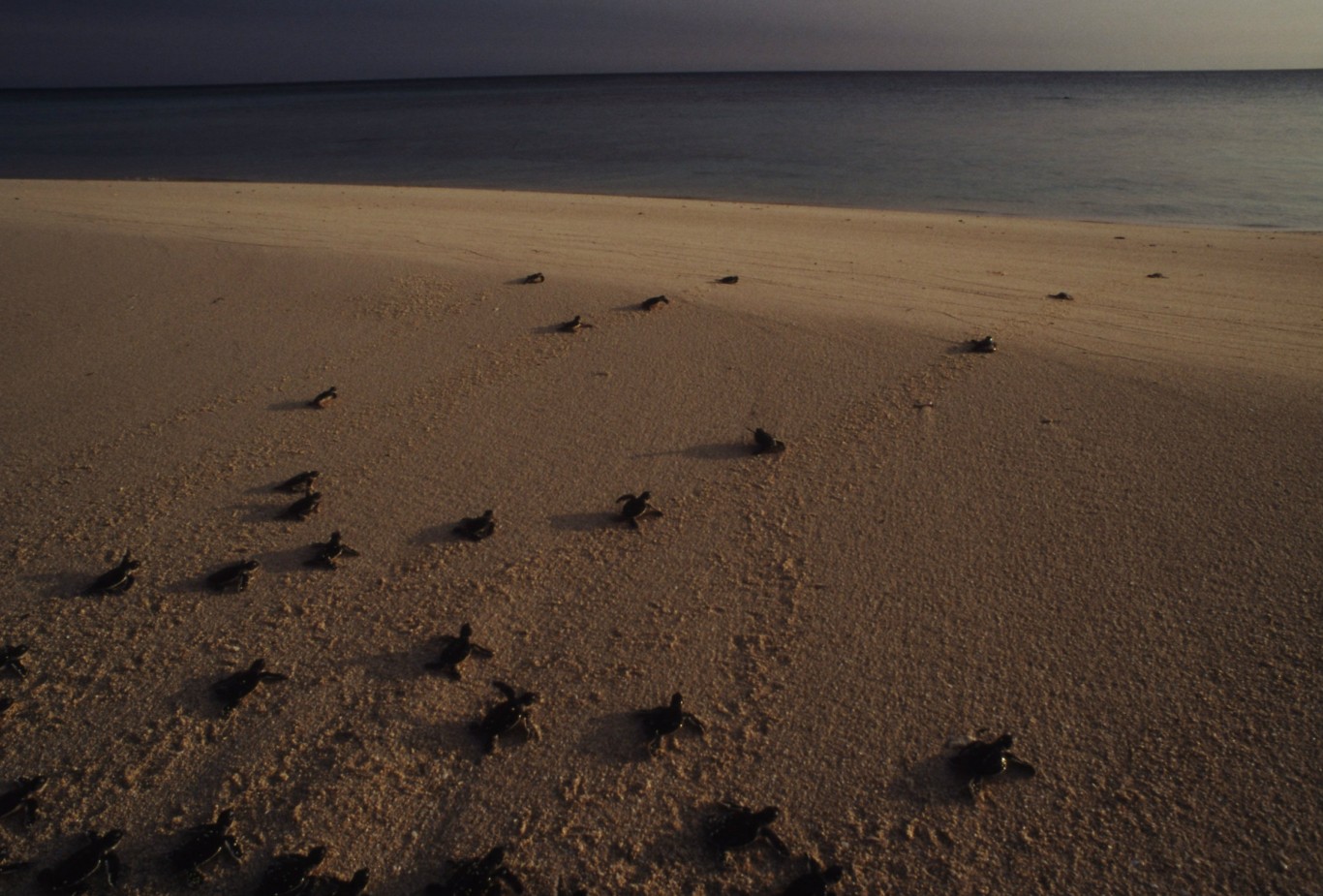
The baby turtles emerge from their nests en masse after 45 or 70 days incubation, depending on the species. They wait at the surface until they feel the sand cooling, which indicates it is night - a safer time to make the hazardous journey down to the water's edge. They eat the yolk of the egg to get enough energy for the trip. Still, many will never even make it to the shoreline.
Jürgen Freund

This baby turtle has been lucky enough to make it off the beach, but it still has only an outside chance of making it to adulthood, as it contends with ocean predators. Baby turtles once they hit the water engage in what's known as a 'swimming frenzy' doing their best to get out of the coastal waters where predation is high. They then drop off the radar for years as they grow up alone in the vastness of the oceans. It is thought that only one in every 1000 makes it to adulthood.
Jürgen Freund
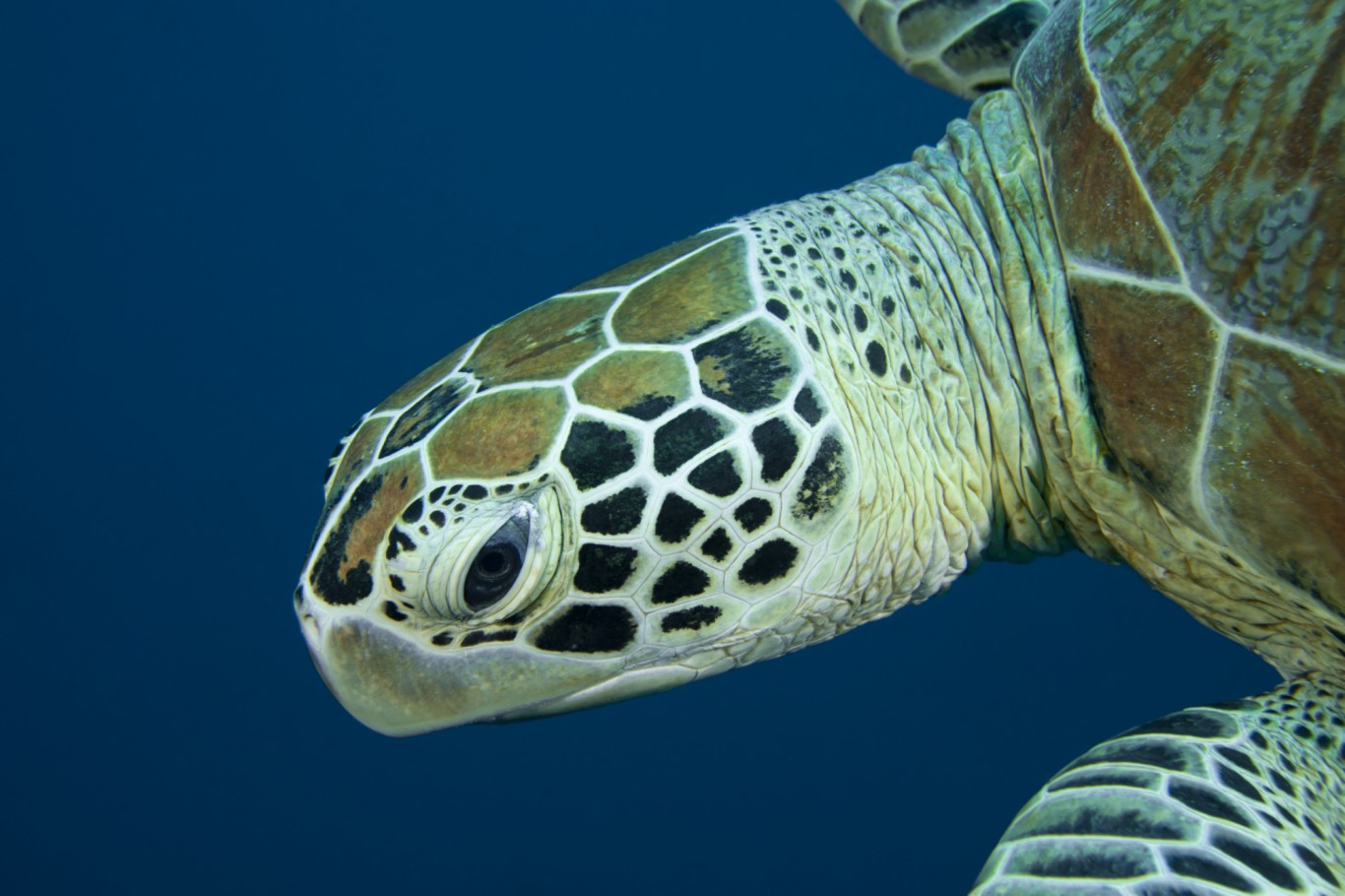
Once they are juveniles, turtles return to the coast, having ridden currents like the famous gulf stream, immortalised in Saving Nemo. They stay in coastal waters until they reach sexual maturity, at which point they will undertake journeys of hundreds or even thousands of miles to their mating grounds, which they return to habitually
Jürgen Freund
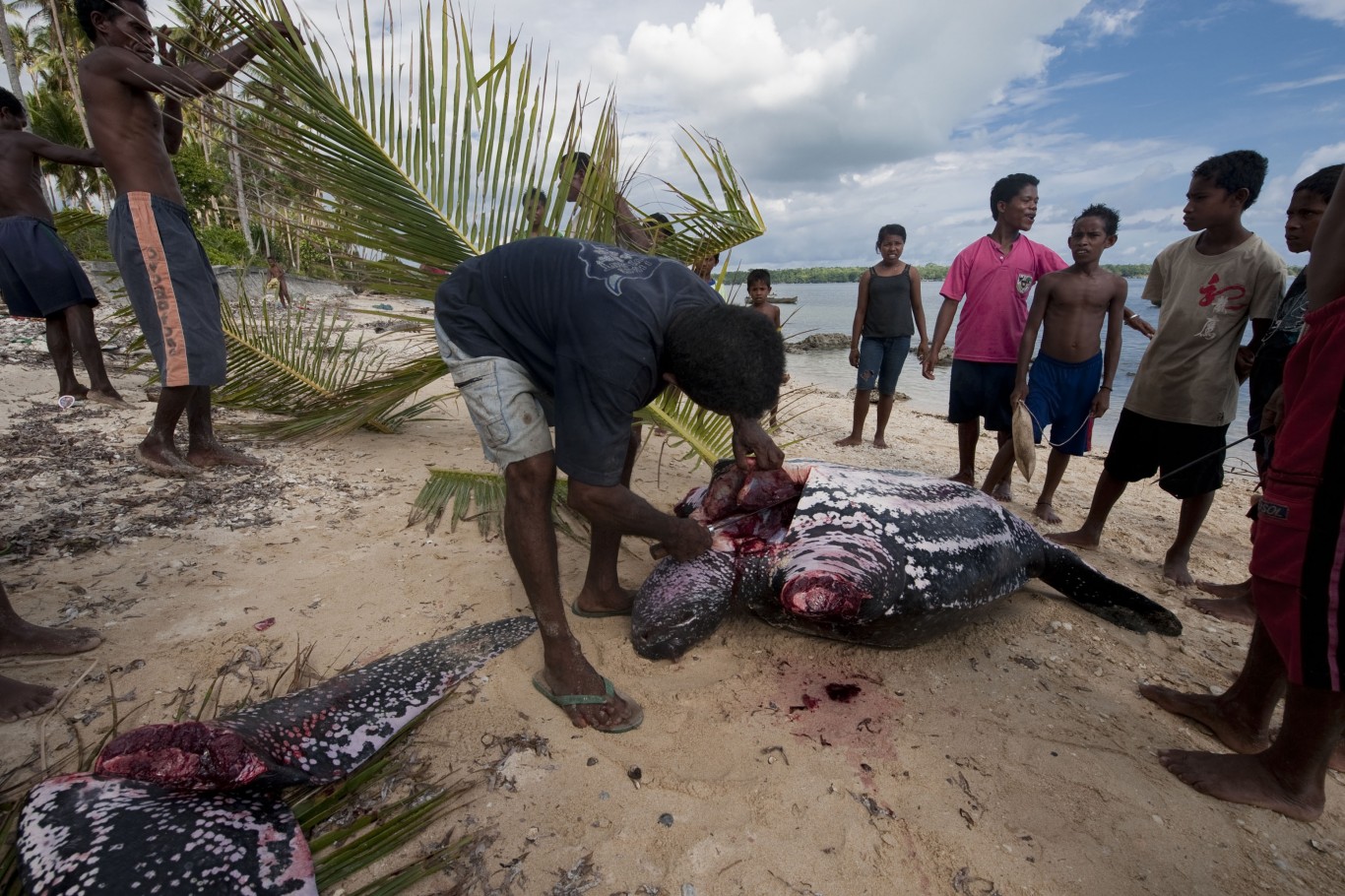
Turtle meat is popular in many countries in the Coral Triangle, including the Solomon Islands where this adult green turtle is being butchered. Eggs are just as popular, with human communities living near turtle nesting beaches often taking every egg laid there - a serious issue in a species with such low infant survival rates. It is popular belief that sea turtle eggs are full of nutrition, but science doesn't support this. In fact they may be hazardous to human health according to WWF, because they contain high levels of biplanar PCB, a type of organic toxic pollutant.
Jürgen Freund
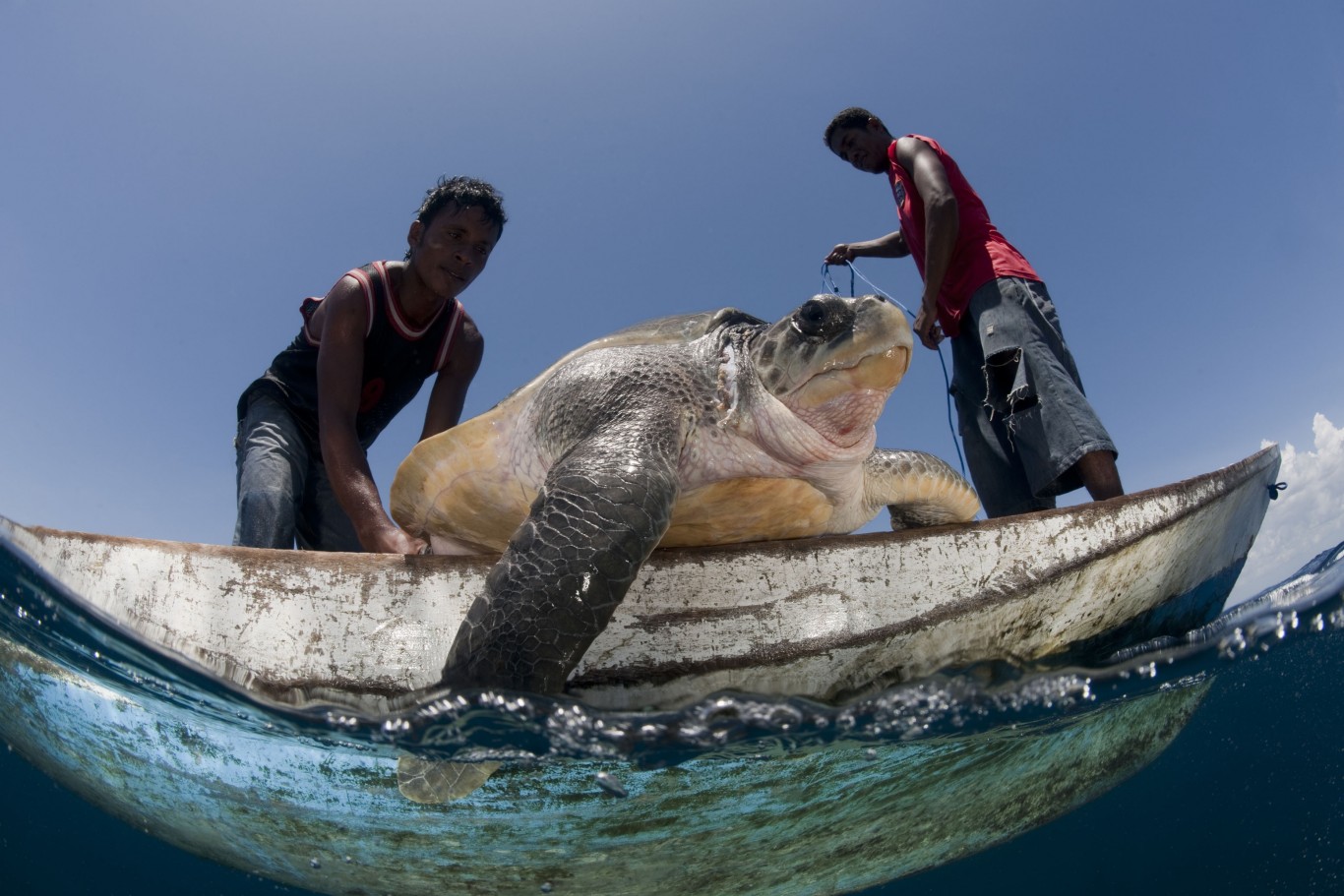
Even when turtles are not intentionally caught for their meat, shell or skin, they often end up tangled in nets or hooked on long lines as bycatch. According to WWF, fishing gear is the single greatest threat to sea turtles - especially endangered species like loggerheads, leatherbacks and green turtles. WWF has been working hard in the Coral Triangle to introduce fishing gear that reduces bycatch - They have introduced hooks that have been shown to reduce bycatch by as much as 90%.
Jürgen Freund
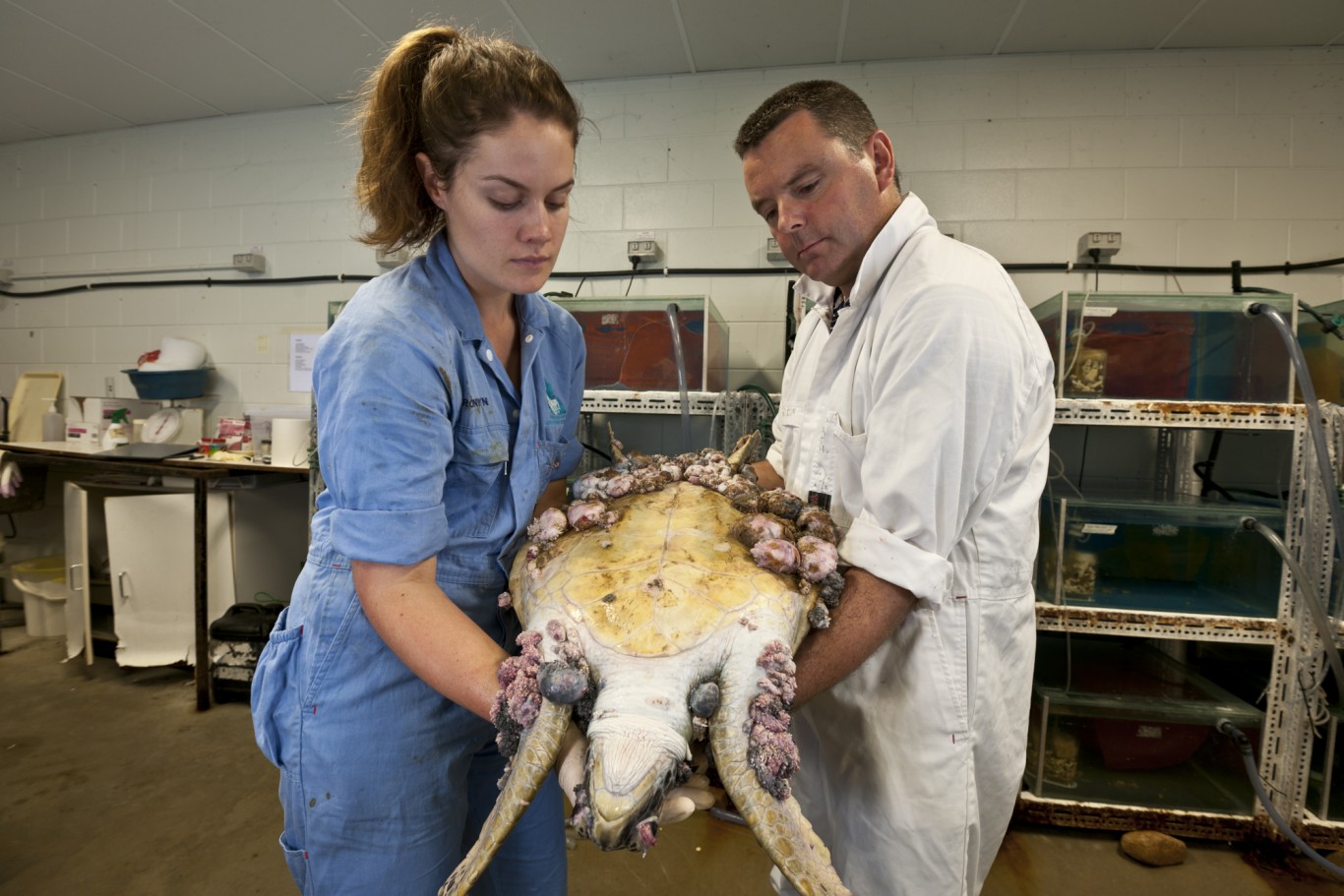
It's not just climate change, destructive fishing and habitat loss that is threatening turtles. Many are also succumbing to a disease known as Fibropapillomatosis which causes both external and internal tumours. It affects 50-70% of turtles in the Coral Triangle and though benign, can hamper their movement and affect their site.
Jürgen Freund
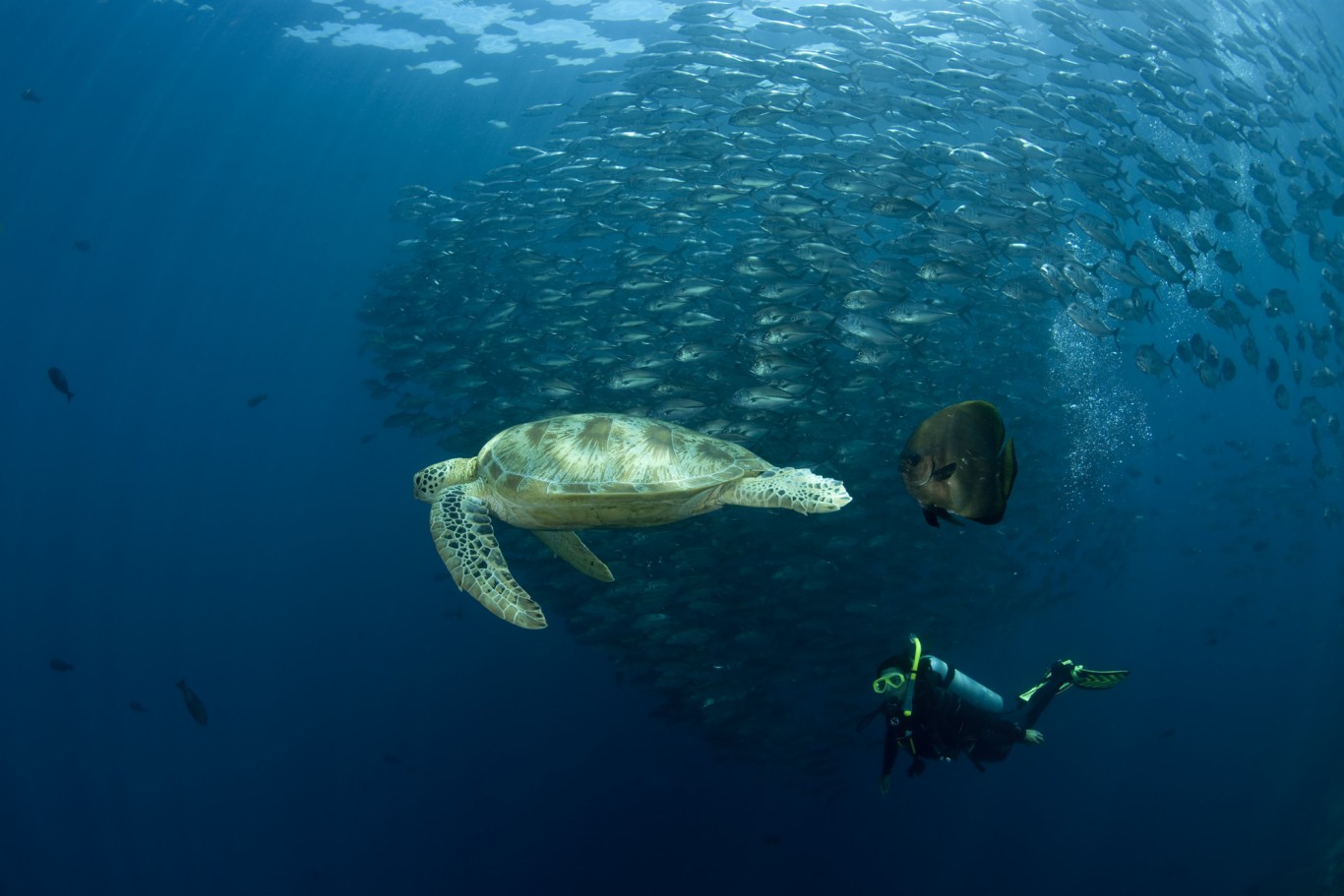
Turtles are iconic creatures and like sharks it can be argued that they are worth far more alive than they are dead. it is a magical experience to have an up close and personal encounter with a sea turtle. They are prolific across the Coral Triangle and there are many opportunities to see them, either as a tourist or as a volunteer on a conservation programme.
Jürgen Freund
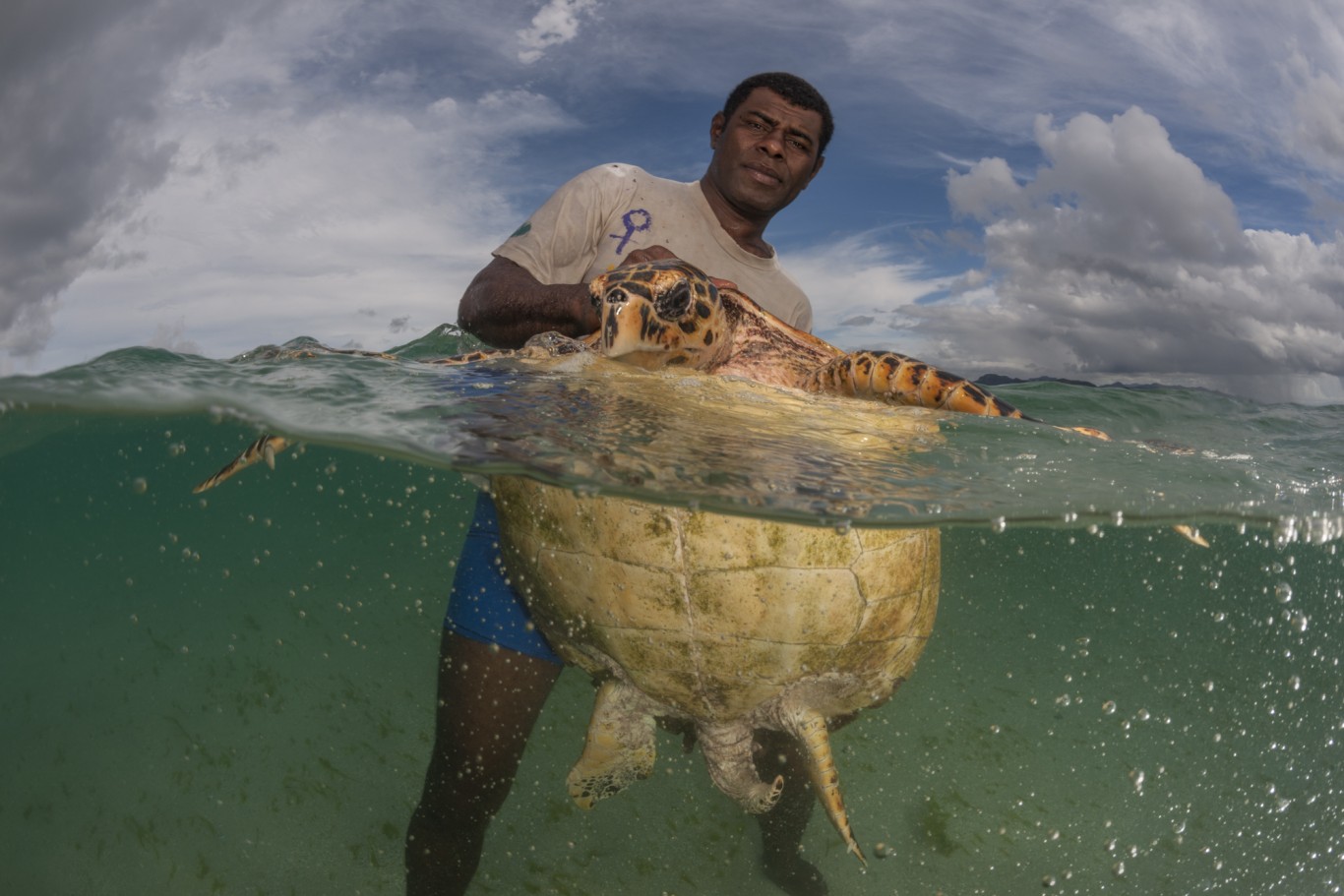
This green turtle is not destined for the cooking pot. This guy is a ranger who works on the island of Tetapare in the Solomon Islands. He is tagging the turtle for scientific purposes so that migratory patterns and other life cycle data can be gathered - probably by scientists an ocean away.
Jürgen Freund
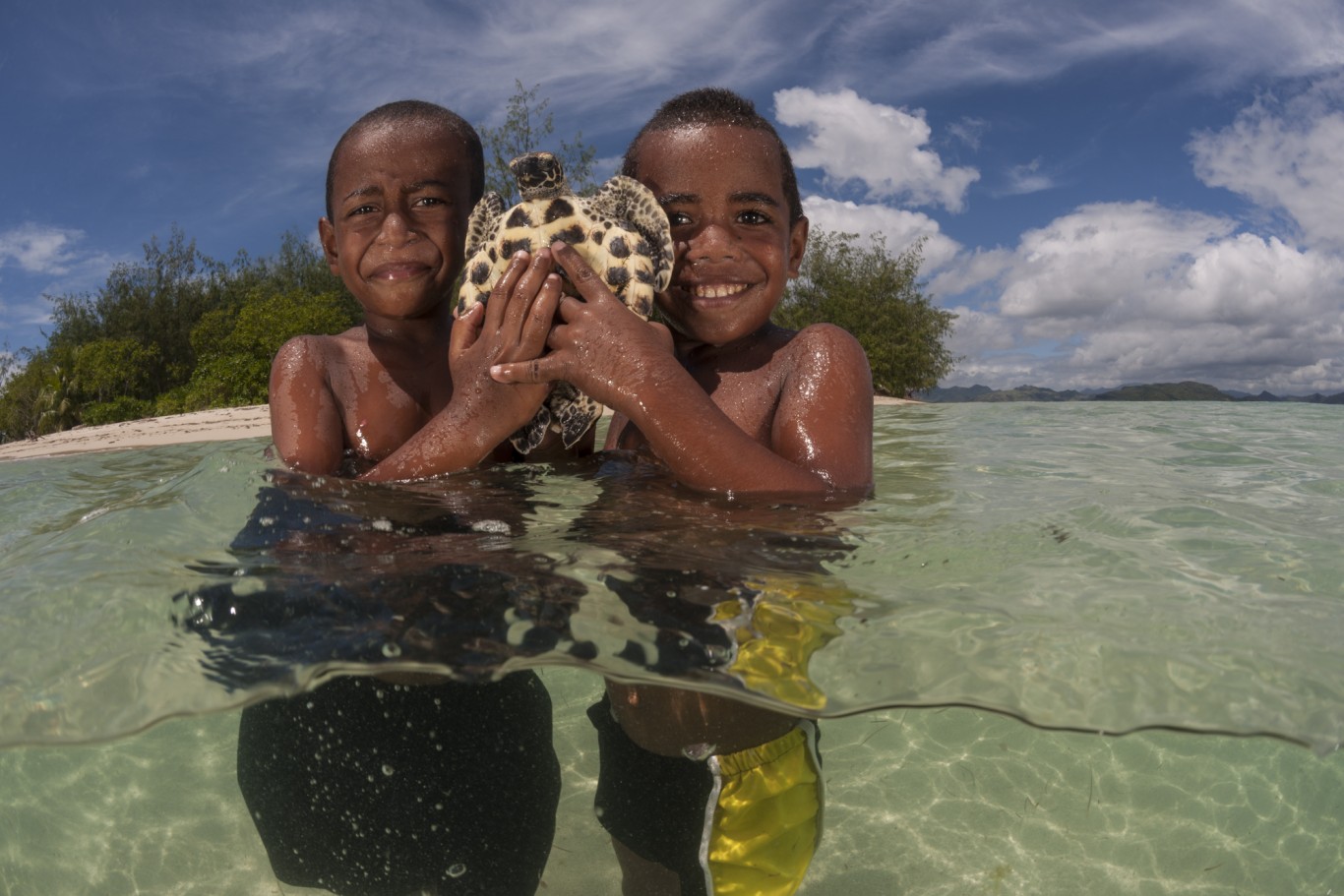
There are a number of sea turtle volunteer programmes in the Coral Triangle, usually in stunning locations. Check out Globalteer for opportunities in northern Borneo. Feel free to contat us via the Contact page for specific enquiries. For more information on sea turtle conservation head over to WWF's marine turtle page here: http://bit.ly/1ODx0K9






